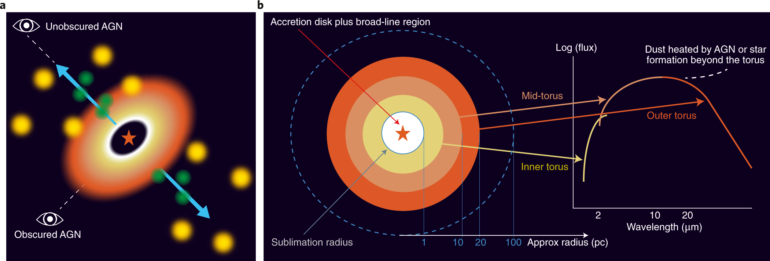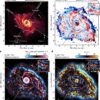New Chinese research suggests that optical variability in emission-line galaxies (ELGs) is likely caused by star-formation activity rather than the activity of supermassive black holes.
The study, conducted by astronomers from the Shanghai Astronomical Observatory (SHAO) of the Chinese Academy of Sciences (CAS) along with scientists from the University of Science and Technology of China, Yunnan Observatories, and the Polar Research Institute of China, was published in The Astrophysical Journal on Nov. 17.
The scientists used a sample of narrowband (NB) images of ELGs in the COSMOS field to study the galaxies’ optical variability. The two-epoch images were acquired 12~15 years apart.
ELGs are relatively low-mass, efficiently star-forming galaxies with less dust. They are generally regarded as abundant in the early universe. Nebular lines, such as Hα, can trace the star formation rate of galaxies, so ELGs are widely used to study star formation and the evolution of galaxies across cosmic time as well as reveal the star formation history of the universe.
At the same time, systematic probes of the optical variability of such galaxies have been lacking. As a result, scientists have been unclear what percentage of ELGs show optical variability and what causes it.
To answer these questions, the researchers investigated the optical variability of a sample of 181 ELGs. They used NB imaging data obtained by the ground-based 8-meter Subaru telescope to check NB photometric variation within the sample.
After excluding the effect of the shape of different NB filters, they found that less than 3% of the sample showed significant optical variability. The researchers then assessed the optically variable ELGs’ X-ray luminosity, mid-infrared activity, radio activity, morphology and other data to determine the cause of the variability. Three origins of such variability are known: an active galactic nucleus (AGN), i.e., an active supermassive black hole; the explosion of a supernova during active star formation; or a stellar tidal disruption event.
According to Lin Ruqiu, a Ph.D. student at SHAO and first author of the study, AGNs were “not the main contributors to the optical variability in these emission-line galaxies.”
Lin noted that high-resolution Hubble Space Telescope images revealed the “merging morphology” of the ELGs, giving support to the idea that supernovae are behind ELG optical variability.
“Star formation is enhanced in merging galaxies, and thus we would see more active star formation activities such as supernova explosions,” said Lin.
More information:
Ruqiu Lin et al, On the Origin of the Strong Optical Variability of Emission-line Galaxies, The Astrophysical Journal (2022). DOI: 10.3847/1538-4357/ac9232
Provided by
Chinese Academy of Sciences
Citation:
Astronomers explore origin of optical variability in emission-line galaxies (2022, December 2)



